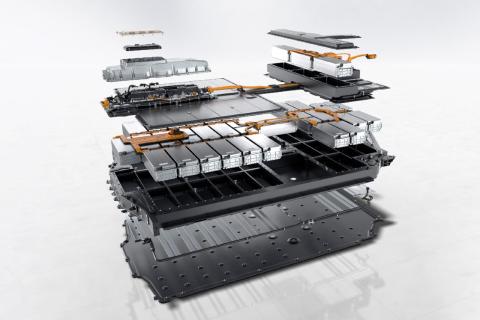
It is not done efficiently.
The electric car is, a priori, the solution for mobility, insofar as it is a much cleaner alternative to current combustion cars. However, these cars are not completely clean, since they generate emissions during their manufacturing process and, when their useful life is over, recycling the lithium batteries is a problem.
Batteries are the most expensive component of electric vehicles, to the point that they are the ones that set the price in the market. In recent years they have been lowering their cost per kWh, but there is still a long way to go in this regard.
It is precisely this cost, which derives from the precious materials that compose them, which makes it interesting to recycle them, to be able to take advantage of them in part and thus lower prices. The problem is that recycling these batteries is complex and quite expensive.
two useful lives
An electric car battery has two different useful lives. The first is fed to the car itself, a process in which, through all the charges and discharges it carries out, little by little it loses capacity until it reaches a point where, by only supplying energy for a few reduced kilometres, it stops be fit for a car.
This does not mean that it still has no route, since at that moment they can be used (in fact it is usual to do so) in stationary units where the demand is lower, so they can be operational for a while longer.
It is when this moment arrives when it is time to think about recycling them, something that today is still not excessively productive or efficient.
Battery recycling problems
We can find two main problems in this regard and the first is one that surely many have not even considered: for the moment, there are not enough batteries to recycle.
Electric cars are on everyone’s lips, but the truth is that it is now when they are beginning to increase their presence in the market, so it will not be for a few years (a decade) that all those batteries will be available for recycling.
Until then, the recycling industry, which has gradually increased its operational capacity, is faced with the problem of not having enough material to work with.
To establish figures, according to Benchmark Mineral Intelligence, by 2025 78% of the scrap supply will derive from manufacturing waste and only the remaining 22% will be from batteries that have reached the end of their useful life. According to the consultant’s calculations, the tipping point will not be reached until the mid to late 2030s.
This, in fact, could even end up being a positive aspect, because it will give the industry time to solve its other big problem: recycling methods are far from being truly productive.
Batteries are made up of a multitude of components, they are very complex and treating them in order to reuse most of them is extremely complicated, to the point that, of all the materials used, very few are profitable to try to recycle ( mainly cobalt).
In addition, the recycling process that is carried out at present has a major problem and that is that it is highly polluting. It involves high temperatures or even the use of acid, so the process generates considerable emissions, as well as large amounts of waste.
At the moment the volume of batteries to be recycled is not excessively large, but when the aforementioned deadlines pass, there will be a real avalanche of batteries to be recycled. By then, the industry should have hit the key to optimize recycling, otherwise the situation will be very problematic.